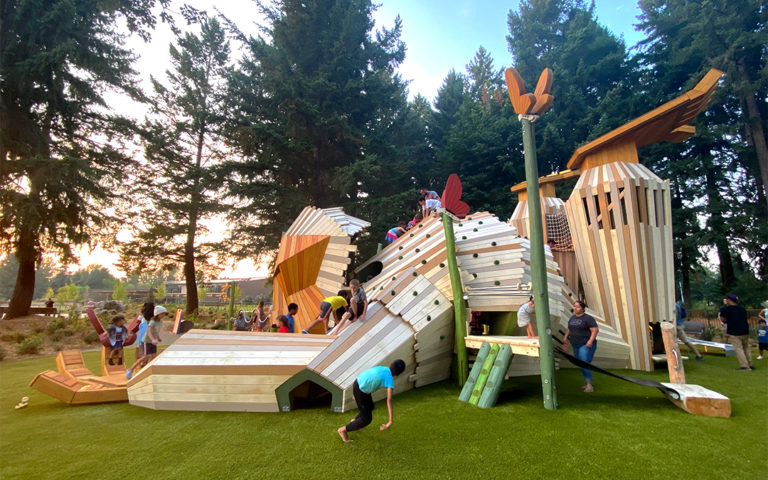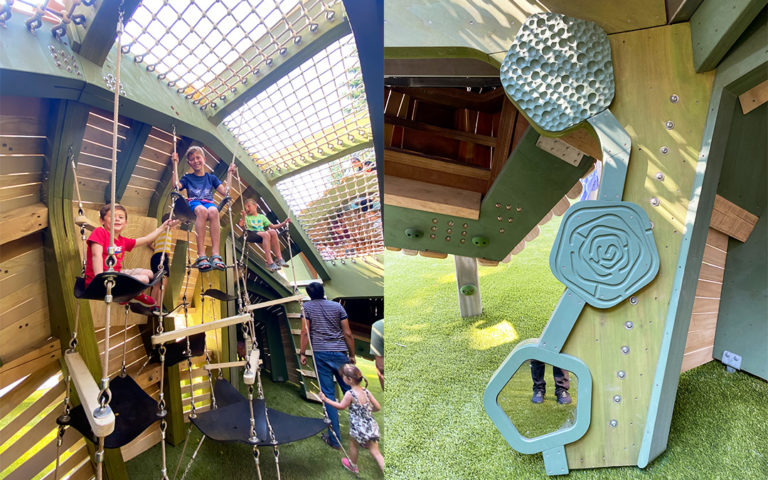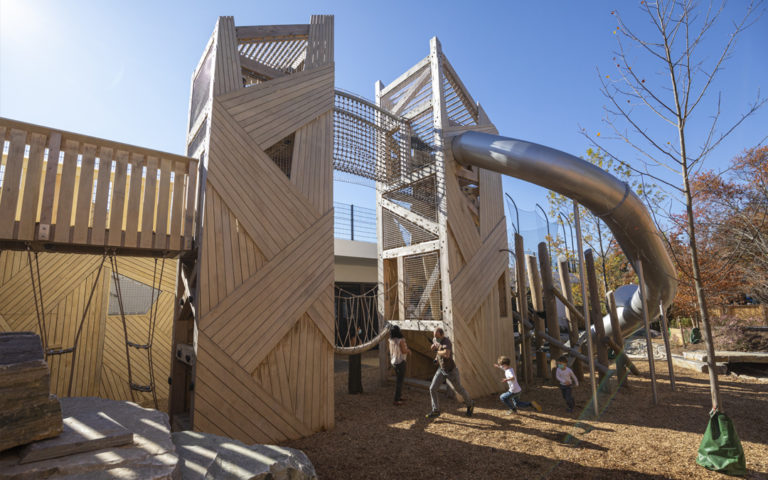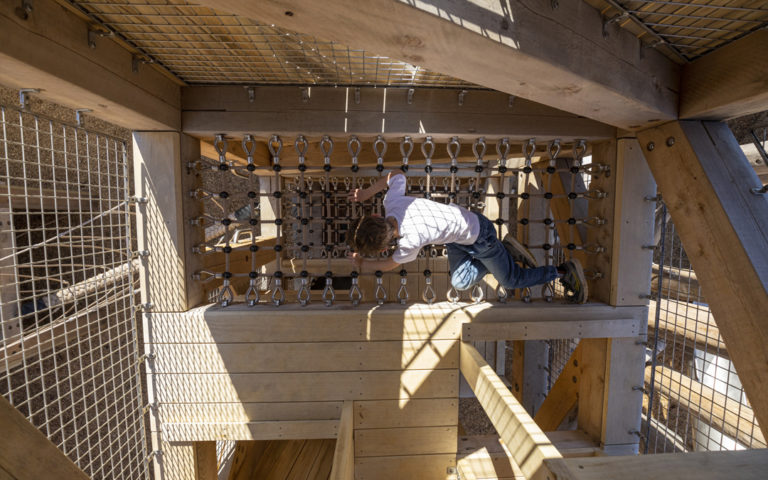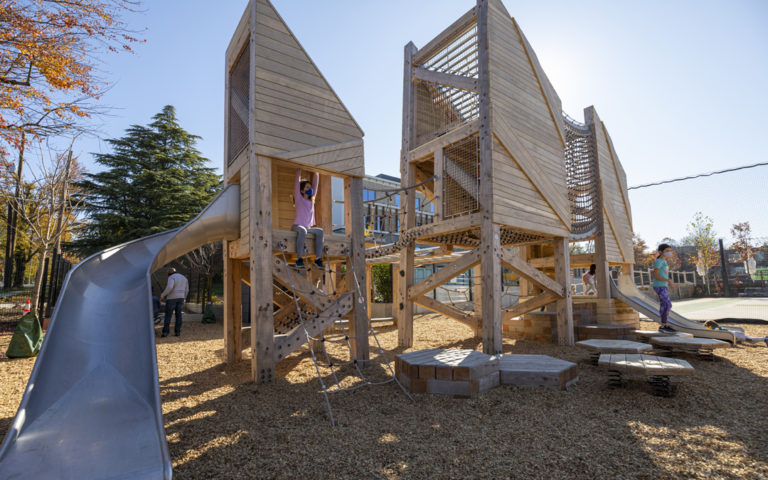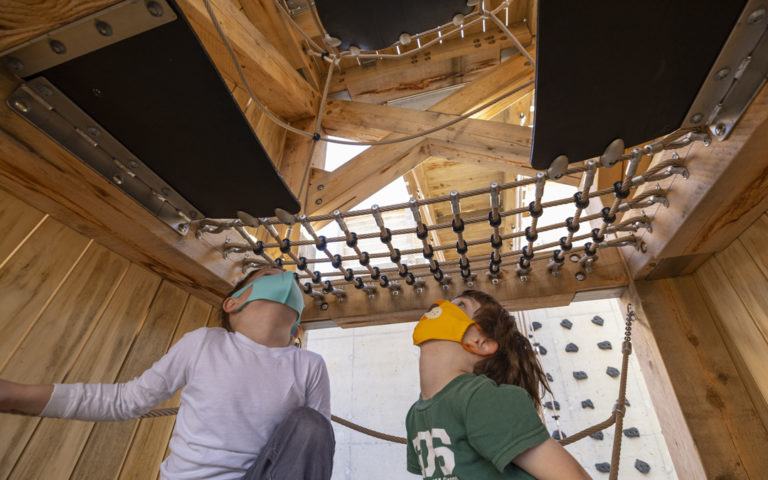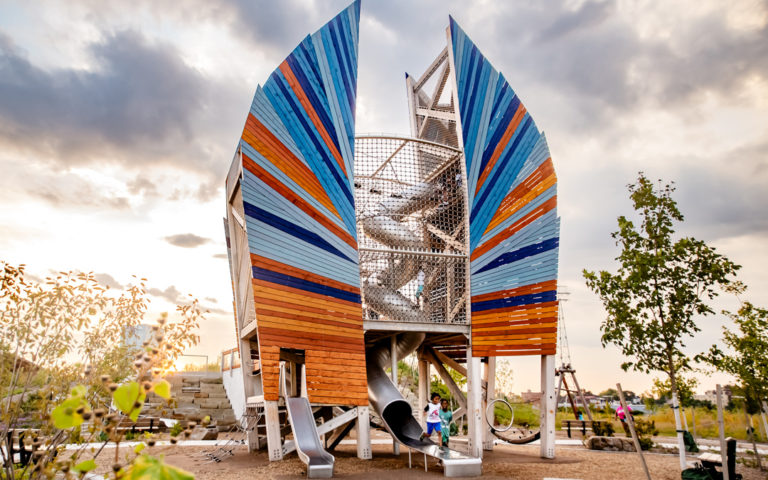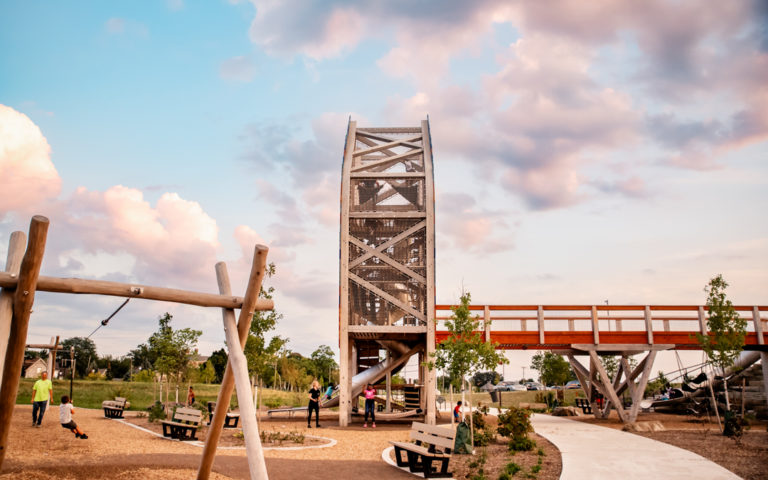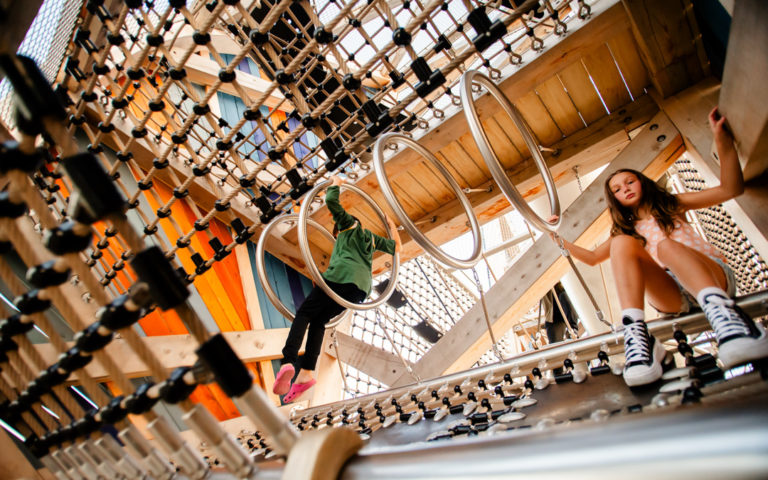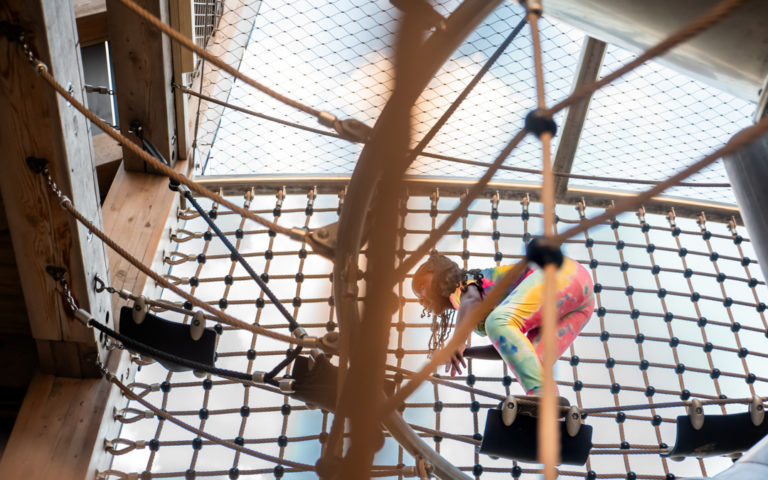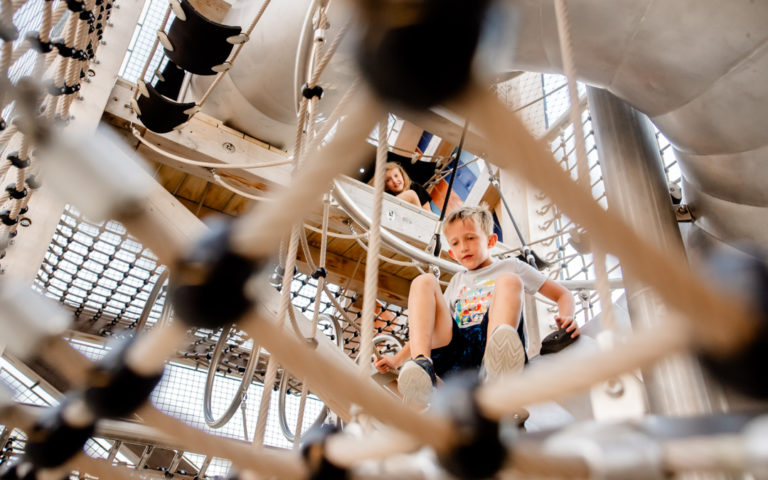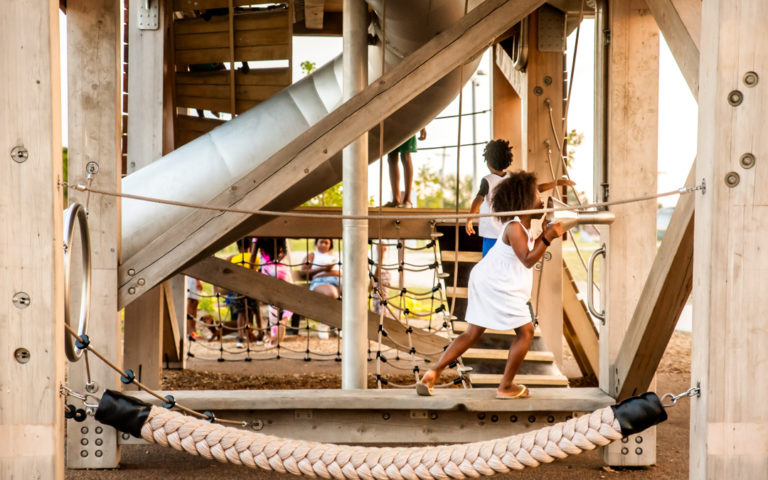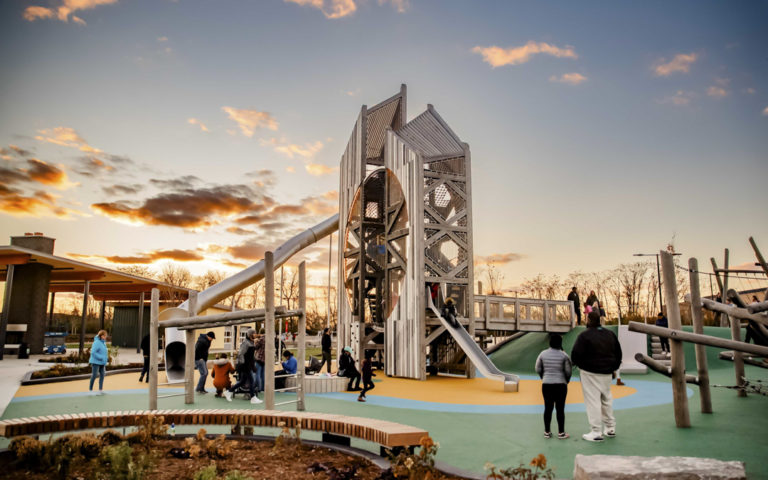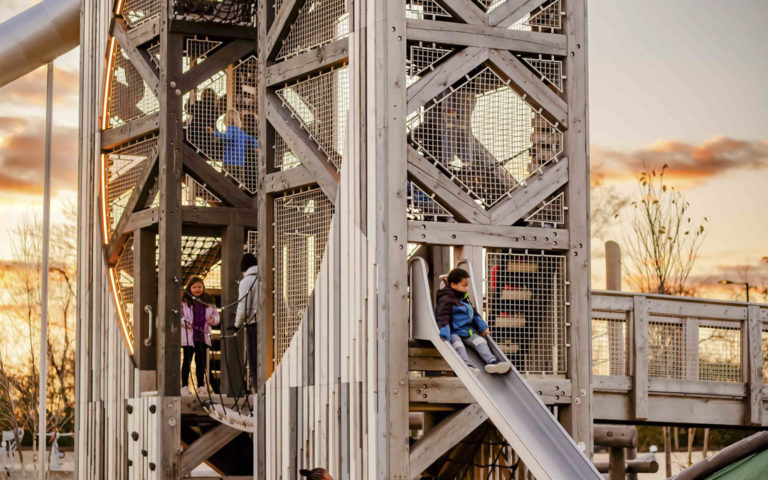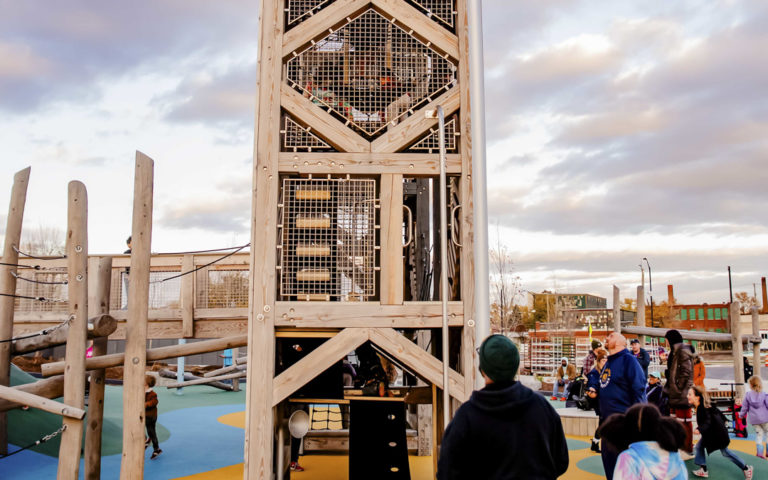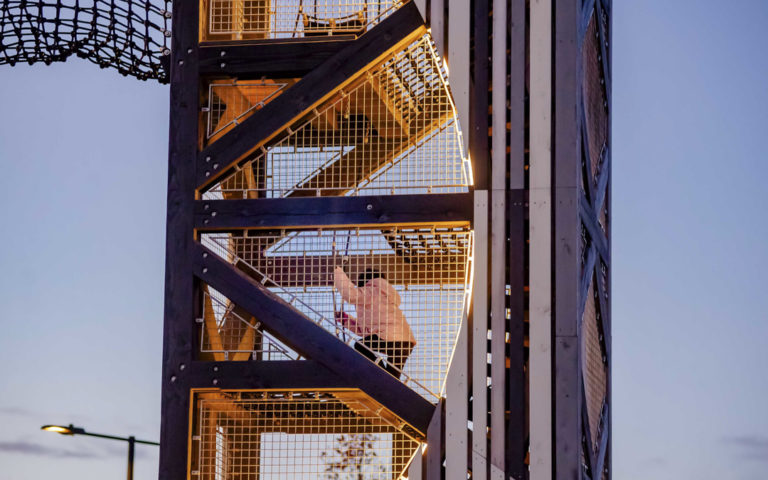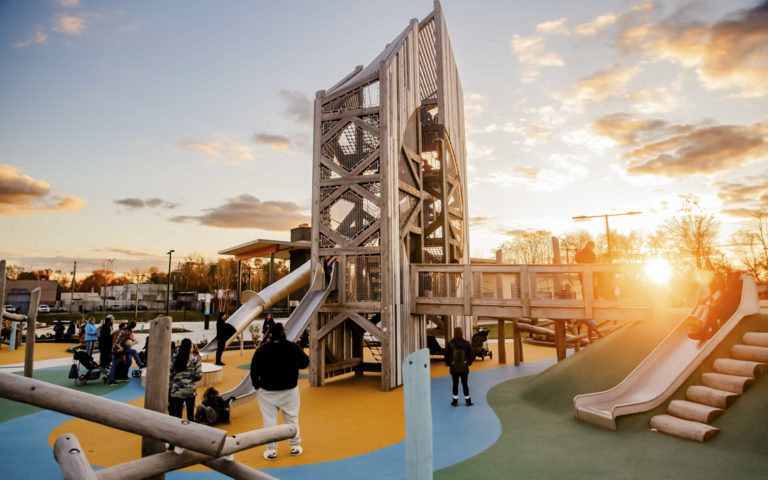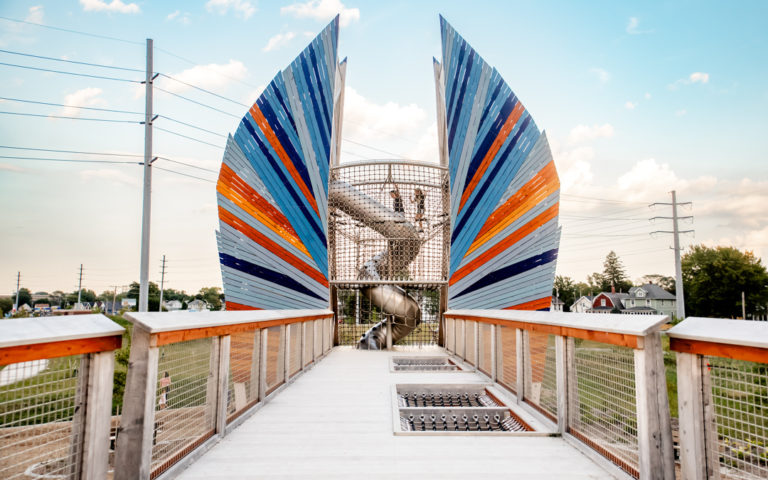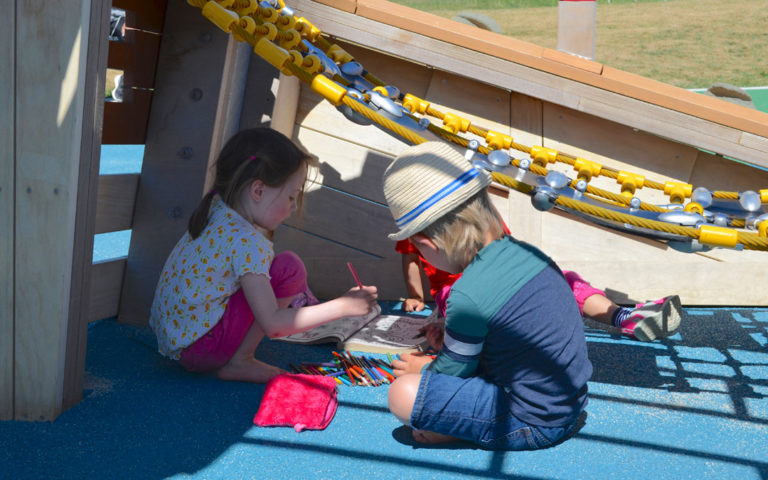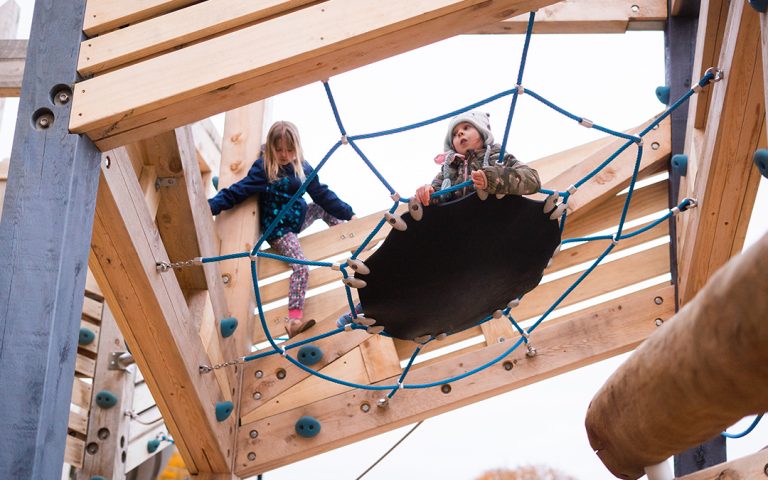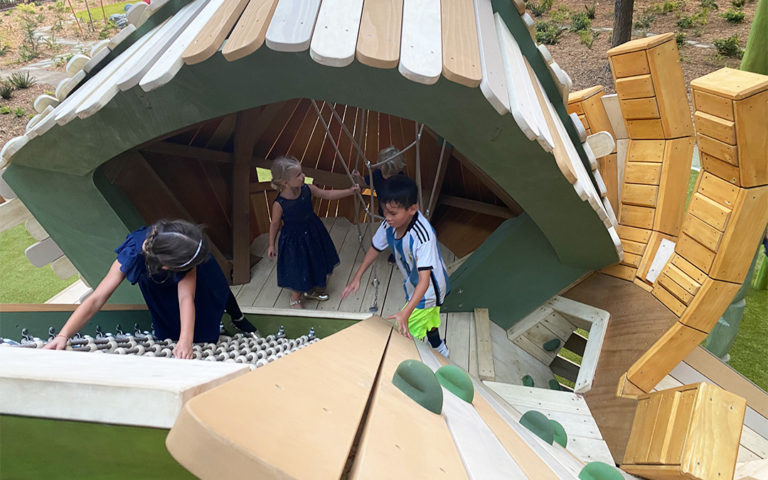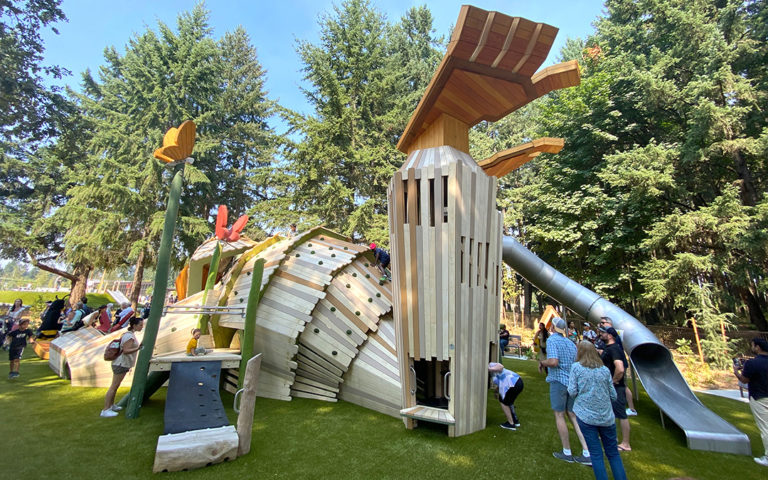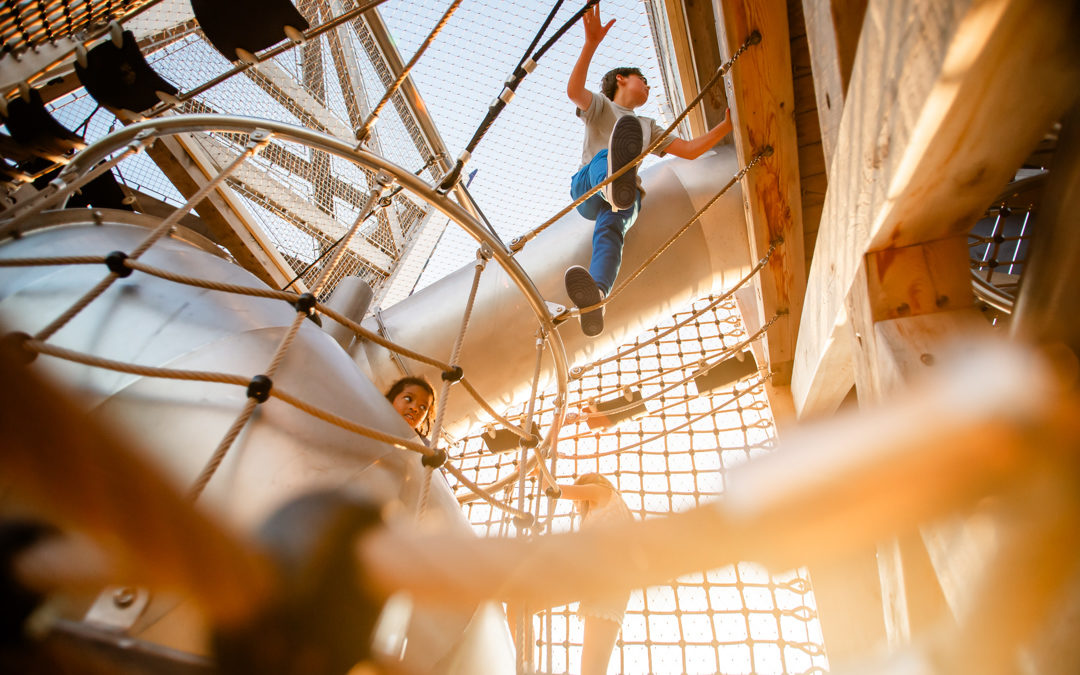
Play Guts: It’s what’s inside that counts!
In our last post we celebrated the grand opening of Oro, our biggest playground structure to date. That sculpture’s strong visual narrative — a big friendly giant lying in repose, belly-down in the park — is the literal ‘framework’ for the intense design work that went into Oro’s interior spaces. The “play guts,” as we affectionately call them.
Consider this: at the same pace that we’ve been making incrementally grander play structures, we’ve also been making them significantly more complex on the inside. Since much of that attention to detail is at children’s eye levels and in the haptic feeling of our playgrounds, we thought we’d highlight how much we think about play affordances in every facet of the playground structures that we design.
The internal complexity of Earthscape structures has really ramped up in the past four years. It has been driven by several factors: client requests, new research and design innovations, and observational discoveries by our team.
Nathan Schleicher, Design Director at Earthscape Play, recalls the design phase on the biophilic Georgetown Day School (GDS) playground in Washington, D.C. as being especially fruitful. The school wanted a complex playground that would be endlessly discoverable for their students from Kindergarten to Grade 12. It’s one thing to design a playground for a child’s first-time exploration, but it’s quite another to consider their 100th+ day of recess.
The result at GDS is a twin tower structure that boasts multi-tiered play with “easter eggs” to be found and discovered on every level:
- net floors for better heights and sightlines as well as a more adventurous scrambling experience;
- Flexform seats and hammocks for climbable and comfortable resting places;
- a variety of bridges that transition between the towers:
- one solid bridge with “troll play” below;
- another fat rope bridge for Indiana Jones-style jungle crossings;
- a third super-tall net bridge that offers a vertical circulation route;
- a fourth, room-sized bridge where kids can climb the walls or scramble across strips of Flexform.
The GDS playground served as a catalyst, pushing Earthscape designers to think more openly and creatively about the interiors of each new project.
The new Grosbeak Playground Towers at Glass City MetroPark in Toledo, Ohio are a “destination playground” par excellence, but what’s happening on the inside gives the monumental centerpiece its “true staying power” for kids and families, argues Janelle Zwart, a designer and project manager at Earthscape Play.
A cross-section of the two towers reveals an impressive — almost bewildering — variety of navigational routes and play choices. To begin, the tower interiors are different; they are not a mirror image with respect to play experience. Angled net climbers and laddered climbing walls alongside suspended Flexform and hoop passages give kids an array of options to scramble up the ascent, traverse across the bridge ways, and then work their way back down or take the spiral tube slide.
The Grosbeak playground’s exterior shape gives few clues as to the unending variety of looping paths on the interior. Here, the game of tag goes vertical, horizontal, and diagonal. Nathan describes the Grosbeak Towers as one of our best examples of the kind of “explorative, open-ended, and choice-making” that our “play guts” make possible.
That kind of circularity is also embedded in the striking ring visual of the Warren Gateway playground on the Joe Louis Greenway in Detroit. Also built in collaboration with SmithGroup, the Gateway towers are shifting the dimension of play structures. The tower with the three-story tube slide, is significantly more challenging to access than the connected second tower. The different play interiors give kids of all ages the opportunity to truly “level up” over the course of multiple trips to the park.
With an ever-growing repertoire of ‘play guts,’ we’re designing and building out play structures that emphasize many routes of play and challenge levels rather than a single, predetermined pathway to play.
In Nathan’s words, “we’re very deliberately trying not to just drop in a bunch of play panels that check certain boxes” around, say, age range and accessibility. Instead, we’re designing new components that engender significant interconnection between different parts of the structure and different sets of kids. This is especially true for how we approach accessibility challenges. In both the Joe Louis and Glass City structures, built site topography creates a ramp that allows for wheelchair access to the second tier of play, opening up improved vertical accessibility. The embankment then serves as a landscape feature that helps define the park space, generating variations in elevation and introducing alternate routes down to the base of the towers via hill slides, log steps, or — if you’re young enough and so inclined — some old-fashioned grass-rolling. Talk tubes are incorporated into the towers at both playgrounds so that children who are physically unable to climb to the top tower level can whisper and talk with kids in other parts of the structure.
To be sure, ‘play guts’ aren’t all just about routes. They’re also about quieter interactions with other kids and measurable beats of pause and relaxation. In reflecting on their own kids’ interactions with Earthscape Playgrounds, both Janelle and Nathan recall different moments of surprise and delight. On a terrifically hot day at the nautically-themed Fairwinds Park in Mississauga, Ontario last summer, Janelle’s five-year-old daughter and a younger friend took shelter from the excess heat under the shipwreck’s angled netting in the bow. They pulled out colouring books and markers, and two other kids crawled into the shaded nook to join them.
On a similarly hot day at Humbertown Park, Nathan watched his kids quickly exhaust themselves. During his many post-occupancy evaluations at Earthscape playgrounds, Nathan has observed that the moments of pause in kids’ play often happen at the highest height of the play structures. At Humbertown, he assumed the gathering moment would have been on the upper deck, but instead, the kids dumped water on the Flexform suspended below deck, crawled up into the hammock seat together, and chatted about Pokemon.
It’s the smaller scale in both these examples that produces increased degrees of coziness. The space might be too tight for adults, but for kids, it’s just right. Referring back to Oro, Janelle notes the kid-cavernous space inside the giant, which is lined with mirror panels and differently textured natural materials. The three-tiered flexform swing seats along one side of Oro’s belly are all interconnected, too, so as one kid moves the other seats shift in tandem. And on one of those seats, the designers imprinted the name “ORO” in braille dots. Janelle sums up the intention—and the delight—of the array of “play guts” Earthscape builds into every nook and cranny of its structures: “It’s those tiny moments of wonder that make for a truly incredible playground.”

